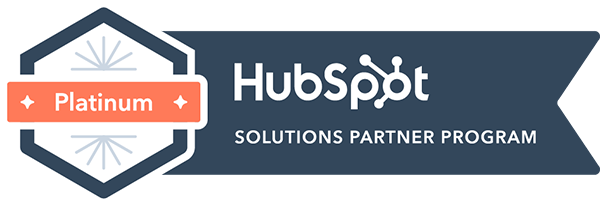
Get a website. Create a Facebook page. Tweet occasionally?
For many businesses, that just about covers everything under their definition of 'digital marketing basics.'
But, the 'basics' have expanded over the last couple of years. As more and more companies catch up in marketing themselves online, it's no longer enough to have a website you rarely look at and a Twitter account. Digital marketing is more sophisticated now and digital marketing basics have expanded. Are you keeping up?
These are the 4 digital marketing basics that every company needs if they want to find success:
1. Persona Development
Who are you talking to? With any form of marketing, it's important to constantly ask that question. Unless you have a clear idea of who your ideal customers are, it's difficult to create content or marketing collateral that will connect with them. Developing 'Buyer Personas' allows you to market directly to your ideal customer's pain points. You can then create content that helps address those issues specifically - establishing your company as an authority and drawing in those potential customers. Even if you don't plan to create and share original content (highly recommended, even if someone else does the writing), you can still target your personas with all of your digital marketing efforts (social media, news updates, paid advertising, promotions). Knowing who is on the other side of the conversation is a MUST for companies who want their marketing to work.
SEE ALSO: Download our Inbound Marketing checklist to learn more
2. Long-tail Keyword Research
Every digital marketing strategy involves some kind of search engine optimization (SEO). When Google initially became a viable first stop for consumers looking for information about goods and services, the major players took notice and realized they needed to rank at the top. So, if you're McDonald's, for example, you show up on the first page of Google for terms like 'hamburger.' If you're a smaller company with less resources, it's more complicated than that. That's where long-tail keywords come in. Long-tail keywords are phrases that align with what your potential customers are searching for. Instead of 'hamburger,' it might be 'best veggie burger in Akron' (if you were a burger joint in Akron that sold veggie burgers). Long-tail keyword research is the process of testing out keywords for 1) ranking difficulty 2) local monthly searches. You want to identify relevant keywords that people in your area are searching for frequently, that don't have a high level of competition. Finding those keywords and using them on your website will help more people find your business first.
3. Instructive Analytics
Analytics refers to your website metrics - such as how many individuals visited your site that month. Knowing how much traffic you're generating has always been a digital marketing basic. But, analytics aren't very useful if they're looked at out of context. If you're simply tracking unique visitors by month, for example, that might read: June - 703 UVs, July - 834 UVs, August - 699 UVs. What does that tell you? To quote Edwin Starr in 'War': Absolutely nothin'. For analytics to be worthwhile, they have to be instructive. They have to help you make more informed future decisions. So, instead of tracking a single fluctuating metric, dig deeper. Find out why July had higher traffic than June and August. What types of content did you publish? Where did the majority of the traffic come from? Is there a particular display ad or promotion that worked well? What marketing channel is yielding the best results? Finding the answers to these questions can direct your marketing strategy. You can see, in the numbers, what's working and allocate more time and resources to it. You can also see what isn't working and ditch the things with poor ROI. Always be able to tie analytics to action.
4. Calls-to-Action
A call-to-action or 'CTA,' is a button or prompt on your website, display ad, published content, e-mail, etc. that encourages the person seeing it to take action. Usually, that action is contacting you for more information or it's a link to a content offer - something additionally helpful for the person interested in your product or service. CTAs are so important because it prevents your marketing from becoming a dead end. You want to make it as easy as possible for an interested potential customer to take the next steps. If a prospect is interested, that interest might be dampened if they have to scour your website for contact information to get in touch. A CTA can also leave a positive impression. Seeing 'find out more,' 'let's talk today,' or 'start now,' can empower that prospect to take action and start the conversation. Make reaching out to your company exciting and easy.
Digital marketing basics have grown up. These are the new standards for companies who want to stay ahead of the curve in digital marketing.




